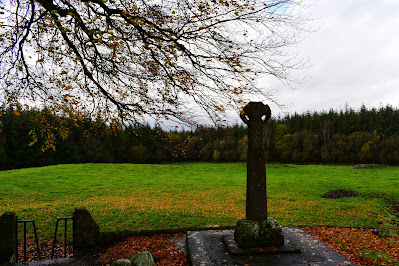Monaincha
Once in a while you head off somewhere without great expectation only to be pleasantly suprised when you get there. Monaincha just outside Roscrea in Tipperary turned out to be just such a place.
The name Monaincha is a combination of several Irish words. Inis na mBeo is the name which originally describes the monastic site here as The Isle of the Living. It was believed that except for a single caveat no one could ever die at Monaincha.
The exception to this legend were women. As soon as a woman set foot on Monaincha she would die. Soo too would female animals, while female birds flew past and never dared to land here.
It's a great story which was probably believed at the time and it was possibly a story designed to keep women away from the celibate monks at Monaincha or to deter the monks from fraternising with the opposite sex. I had no idea that was Roscrea was such a hotbed of amorous activity but the old cliché about no Smart phones or TV spring to mind.
Knowing little of its history and with just a general idea of where it was situated Monaincha turned out to be quite a beautiful and interesting place situated in a picturesque location. Peaceful and magical are some of the words I have heard to describe it and I wouldn't disagree in the least.
Early christianity in Ireland can be difficult to decipher and many Saints are obscure in both name and origin. It's believed that Monaincha was founded by a Saint Elair sometime in the 7th century however the site is also associated with Saints Canice of Aghaboe and Cronan of Roscrea.
Monaincha is one of those places that is seldom visited for reasons unknown to me, places of outstanding natural beauty and tranquility that are hidden away in the most unlikely of locations.
Originally the site was an Island on a small lake, Lough Cré, surrounded by water which has long since been drained. There were at least two Islands here at one time, possibly more.
The Church at Monaincha is architecturally described as a 12th century Hiberno-Romanesque construction and it is a wonderful building with plenty of beautiful red sandstone. The doorway and arches are in the Romanesque style and are wonderful examples with zigzags, chevrons and various patterns on the carved stone columns and jambs surrounding them.
At the rear of the Church are vaults and stairways which were probably constructed at a later date but add to the overall beauty and impression of the structure.
A High Cross stands to the front of the Church and it is purportedly a combination of at least two different fragments from seperate crosses, the base and the head being unrelated according to some.





















